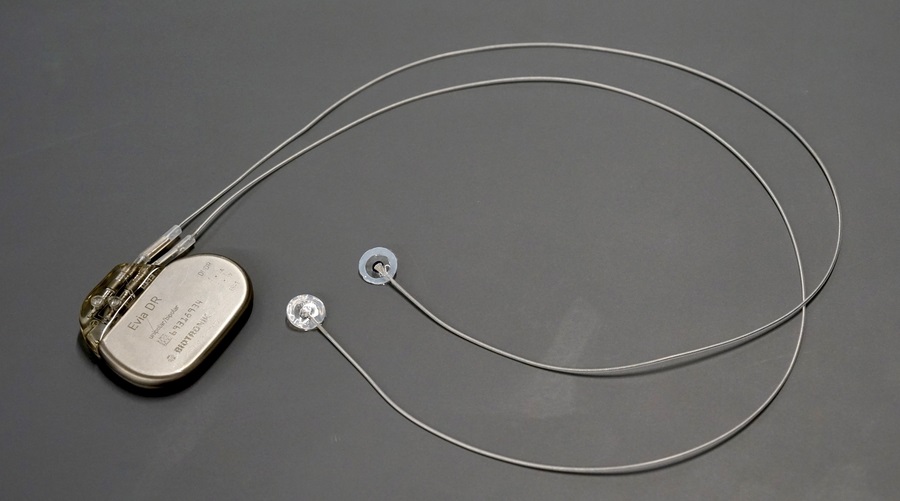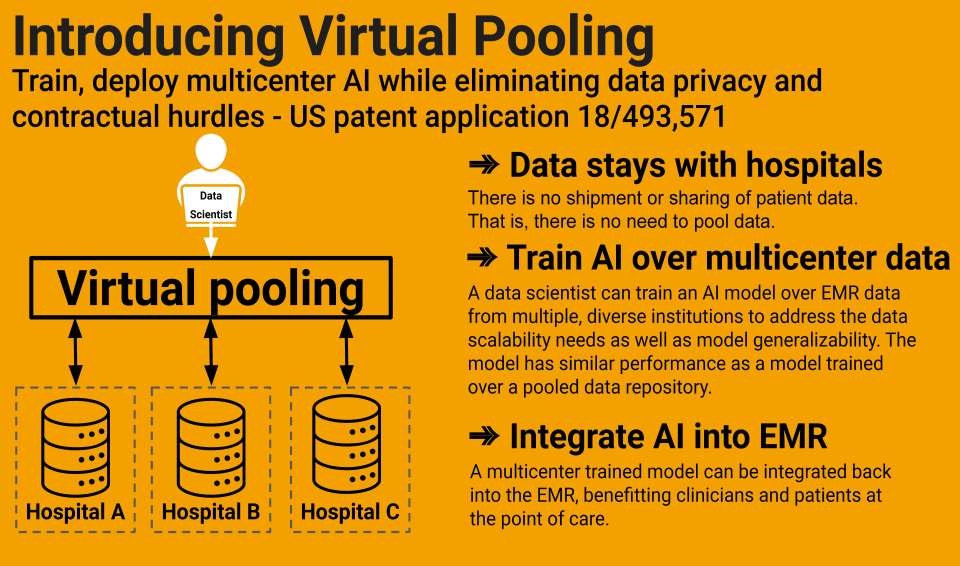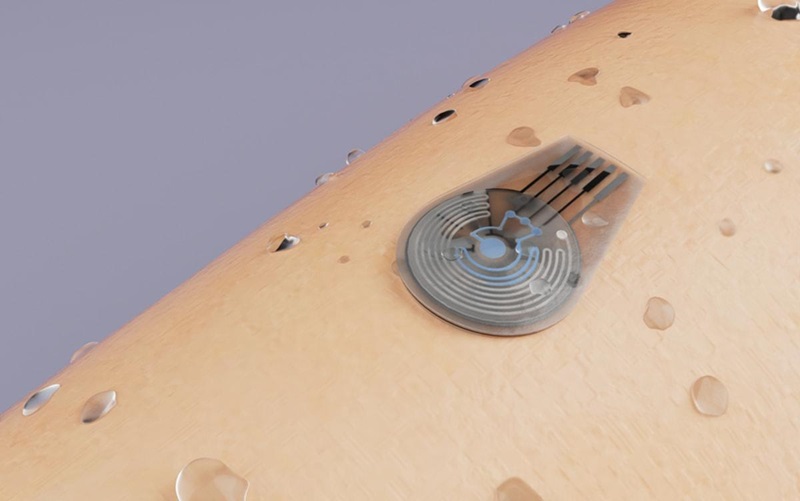Expo
view channel
view channel
view channel
view channel
view channel
view channel
Medical Imaging
AICritical Care
Patient CareHealth ITPoint of CareBusiness
Events

- Wearable Patch Accurately and Continuously Measures Trace Perspiration for Disease Detection
- Nanorobot with Hidden Weapon Precisely Targets and Kills Cancer Cells
- Groundbreaking System Combining Leadless Pacemaker with Subcutaneous Defibrillator to Revolutionize Cardiac Care
- Novel Hydrogel Could Provide Alternative to Pacemakers
- Novel Capsule Releases Microscopic Robots into Colon to Treat Inflammatory Bowel Disease
- Advanced AI Technology Improves Accuracy and Efficiency of Nasal Endoscopy
- Detachable Cardiac Pacing Lead to Improve Safety for Heart Patients
- New Endoscopic Neurosurgery Approach Targets Difficult Tumors at Skull Base
- Python Teeth-Inspired Device Revolutionizes Rotator Cuff Repair Surgery
- Non-Eluting Coating Actively Kills Bacteria Contaminating Surface of Medical Devices
- Surgical Capacity Optimization Solution Helps Hospitals Boost OR Utilization
- Game-Changing Innovation in Surgical Instrument Sterilization Significantly Improves OR Throughput
- Next Gen ICU Bed to Help Address Complex Critical Care Needs
- Groundbreaking AI-Powered UV-C Disinfection Technology Redefines Infection Control Landscape
- Clean Hospitals Can Reduce Antibiotic Resistance, Save Lives
- BD Acquires Edwards Lifesciences' Critical Care Product Group for USD 4.2 Billion
- MEDICA INNOVATION FORUM for the Healthcare Innovations of the Future
- Johnson & Johnson Acquires Cardiovascular Medical Device Company Shockwave Medical
- Mindray to Acquire Chinese Medical Device Company APT Medical
- Olympus Acquires Korean GI Stent Maker Taewoong Medical
- Strategic Collaboration to Develop and Integrate Generative AI into Healthcare
- AI-Enabled Operating Rooms Solution Helps Hospitals Maximize Utilization and Unlock Capacity
- AI Predicts Pancreatic Cancer Three Years before Diagnosis from Patients’ Medical Records
- First Fully Autonomous Generative AI Personalized Medical Authorizations System Reduces Care Delay
- Electronic Health Records May Be Key to Improving Patient Care, Study Finds
- Cartridge-Based Hemostasis Analyzer System Enables Faster Coagulation Testing
- Critical Bleeding Management System to Help Hospitals Further Standardize Viscoelastic Testing
- Point of Care HIV Test Enables Early Infection Diagnosis for Infants
- Whole Blood Rapid Test Aids Assessment of Concussion at Patient's Bedside
- New Generation Glucose Hospital Meter System Ensures Accurate, Interference-Free and Safe Use

Expo
 view channel
view channel
view channel
view channel
view channel
view channel
Medical Imaging
AICritical Care
Patient CareHealth ITPoint of CareBusiness
Events
Advertise with Us
view channel
view channel
view channel
view channel
view channel
view channel
Medical Imaging
AICritical Care
Patient CareHealth ITPoint of CareBusiness
Events
Advertise with Us


- Wearable Patch Accurately and Continuously Measures Trace Perspiration for Disease Detection
- Nanorobot with Hidden Weapon Precisely Targets and Kills Cancer Cells
- Groundbreaking System Combining Leadless Pacemaker with Subcutaneous Defibrillator to Revolutionize Cardiac Care
- Novel Hydrogel Could Provide Alternative to Pacemakers
- Novel Capsule Releases Microscopic Robots into Colon to Treat Inflammatory Bowel Disease
- Advanced AI Technology Improves Accuracy and Efficiency of Nasal Endoscopy
- Detachable Cardiac Pacing Lead to Improve Safety for Heart Patients
- New Endoscopic Neurosurgery Approach Targets Difficult Tumors at Skull Base
- Python Teeth-Inspired Device Revolutionizes Rotator Cuff Repair Surgery
- Non-Eluting Coating Actively Kills Bacteria Contaminating Surface of Medical Devices
- Surgical Capacity Optimization Solution Helps Hospitals Boost OR Utilization
- Game-Changing Innovation in Surgical Instrument Sterilization Significantly Improves OR Throughput
- Next Gen ICU Bed to Help Address Complex Critical Care Needs
- Groundbreaking AI-Powered UV-C Disinfection Technology Redefines Infection Control Landscape
- Clean Hospitals Can Reduce Antibiotic Resistance, Save Lives
- BD Acquires Edwards Lifesciences' Critical Care Product Group for USD 4.2 Billion
- MEDICA INNOVATION FORUM for the Healthcare Innovations of the Future
- Johnson & Johnson Acquires Cardiovascular Medical Device Company Shockwave Medical
- Mindray to Acquire Chinese Medical Device Company APT Medical
- Olympus Acquires Korean GI Stent Maker Taewoong Medical
- Strategic Collaboration to Develop and Integrate Generative AI into Healthcare
- AI-Enabled Operating Rooms Solution Helps Hospitals Maximize Utilization and Unlock Capacity
- AI Predicts Pancreatic Cancer Three Years before Diagnosis from Patients’ Medical Records
- First Fully Autonomous Generative AI Personalized Medical Authorizations System Reduces Care Delay
- Electronic Health Records May Be Key to Improving Patient Care, Study Finds
- Cartridge-Based Hemostasis Analyzer System Enables Faster Coagulation Testing
- Critical Bleeding Management System to Help Hospitals Further Standardize Viscoelastic Testing
- Point of Care HIV Test Enables Early Infection Diagnosis for Infants
- Whole Blood Rapid Test Aids Assessment of Concussion at Patient's Bedside
- New Generation Glucose Hospital Meter System Ensures Accurate, Interference-Free and Safe Use










































